Village atmosphere with unique Chalk formation-The Hunstanton Beach, England
Hunstanton beach, Norfolk
Hunstanton is a seaside town in Norfolk, England. It faces west across Wash, making it one of the few places on the east coast of Great Britain where the sun sets over the sea. Hunstanton lies 164 km from London and 64 km. west of Norwich. It is a popular holiday destination for visitors all around the world. Hunstanton’s excellent beach offers ideal conditions for playing on the sand, exploring rock pools, and enjoying the sea. Old Hunstanton has a much quieter village atmosphere, with Carrstone-built cottages. The town’s array of gardens is especially delightful during the Spring and summer months. The Oasis Leisure Centre and tranquil Gardens are famous among the visitors. Hunstanton’s popular seasonal land train carries visitors from Searles Leisure Resort to the Lighthouse and back again, making it very easy, to travel around Hunstanton and many of the other sights.
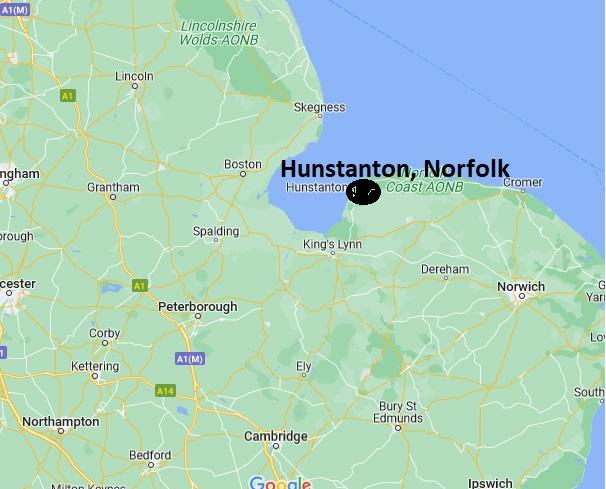
Geology of Hunstanton beach
The coastal cliffs include the type section of the Hunstanton Formation of lower reddish limestone which was laid down during the Lower Cretaceous. This is topped by a white chalk layer from the Upper Cretaceous epoch. The most impressive site on these two beaches is the cliff face, three-tiered chalk, red chalk, and Carrstone cliff face The site is also great for fossil collecting and just a wonderful geographical sight to wander along. Norfolk Coast Path walk is one of the 12 famous National Trails in the UK. It begins high up from the Norfolk on the cliffs of Hunstanton UK and takes you along the dunes and behind the beach huts at Old Hunstanton.
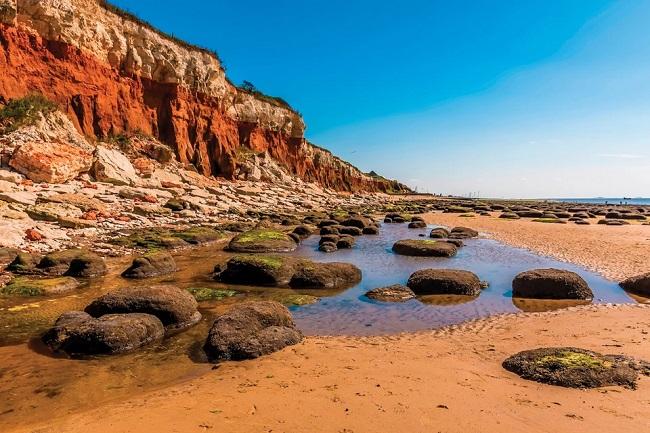
Heacham & Hunstanton
Heacham and Hunstanton are the east coast resorts that face west and are two of the sunniest destinations in Norfolk, enjoying some dramatic sunsets. Hunstanton, or Sunny Hunny, is an elegant Victorian resort and began its life as a purposely-built resort in 1846. Hunstanton is divided into the village of Old Hunstanton and New Hunstanton.
Just three miles along the coast is the stone age settlement of Heacham. Heacham is also famous for being at the heart of Norfolk’s lavender growing industry. In the summer, the landscape and air are filled with the color and aroma of lavender. The water in Hunstanton beaches is shallow and sheltered making the beaches ideal for swimming. When the sun is out, a reflection of the sun in a golden and silver trail across the water makes a beautiful array of light.
Hunstanton is the west faces beach, making the beach relatively sheltered from sea breezes and an excellent place to enjoy watching the sunset. the part nearest the resort being mainly made of shingle and boulders leading into the sea. Hunstanton beach is remarkable for its striking pink and white striped cliffs, formed from a combination of Norfolk Carrstone and white chalk.
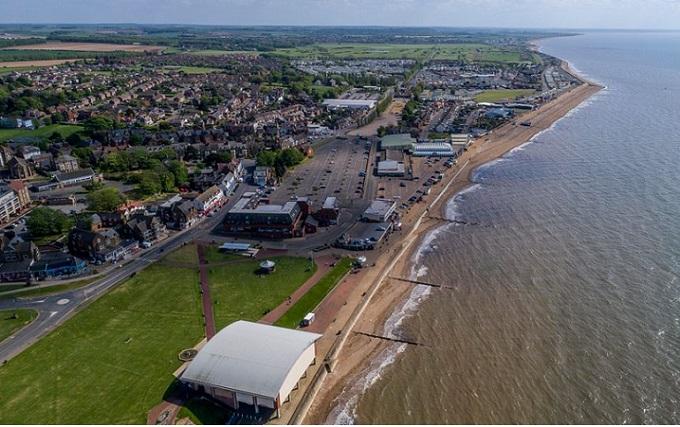
The beach area has plenty of interesting rock pools for Geotourist to see and enjoy, with finding fossils among the rocks and shingles. The calm, and shallow waters make the beach particularly popular with kite-surfers and body-boarders. When the tide is out, a wide expanse of sand is exposed. The promenade is home to Hunstanton Sea Life Sanctuary, which features an underwater tunnel and a seal hospital. The Norfolk Coast Path starts at the end of the North Promenade and is popular among the walkers.
Hunstanton Beach and Old Hunstanton Beach
Both Hunstanton beach and Old Hunstanton beach are extremely popular all year round. New Hunstanton beach is full of arcades, funfair, and amusements as well as the Sea Life Centre, while the Old Hunstanton provides excellent kite and windsurfing, as well as fantastic walking along the Norfolk Coast Path.
Also read- Lava Beds National Monument of California-A great Volcanic wonderland
Old Hunstanton is known for its famous striped cliffs and Esplanade Gardens, a traditional Victorian promenade garden, with bowling green. The town’s gardens are especially delightful during the Spring and summer months, and you can follow a self-guided Horticultural Trail. Hunstanton’s excellent beach is great for playing on the sand, exploring rock pools, and enjoying the sea.
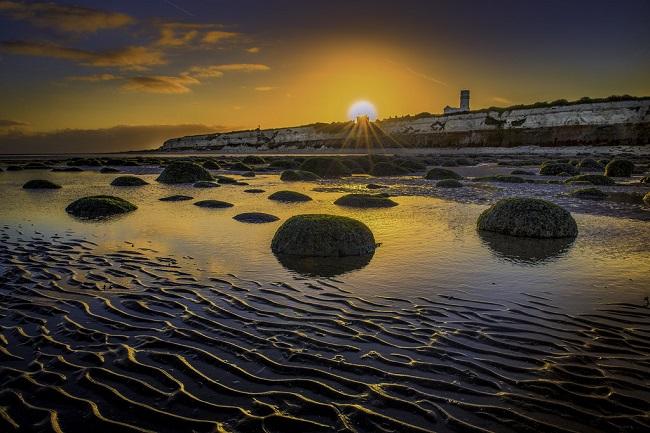
Geotourism of Hunstanton beach
Hunstanton is a beach known for its Limestone cliff and chalk formation. Along with this, The town has several Victorian squares. Hunstanton has a fairground, aquarium and seal sanctuary, leisure pool, theatre, large caravan parks with amenities, some amusement arcades, and a long promenade. The centerpiece remains the large sloping green from one end of the High Street to the promenade.
The main shopping streets have stone buildings, some with glazed canopies, evoking the Victorian and Edwardian eras of their construction. The countryside around Hunstanton is hillier than most of Norfolk and sparsely populated, the only large settlement nearby in King’s Lynn,19 km to the south.
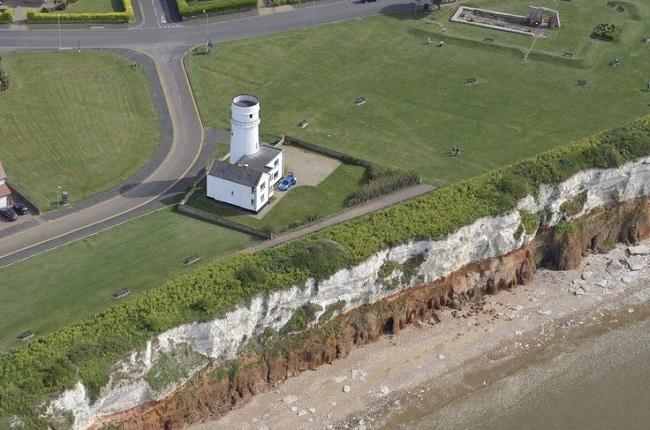
The Lighthouse and St Edmund’s Chapel
There are a few lighthouses dotted around the Norfolk coast; one fairly painted white, overlooking Cromer beach is Cromer Lighthouse the other one being the iconic red and white lighthouse at Happisburgh. This area all are wonderful sights to see. St Edmund’s Chapel, a small ruin but still with spectacular views over Wash, was said to be built in 1272 in the memory of St Edmunds who died in a shipwreck accident and was the future king of the region.
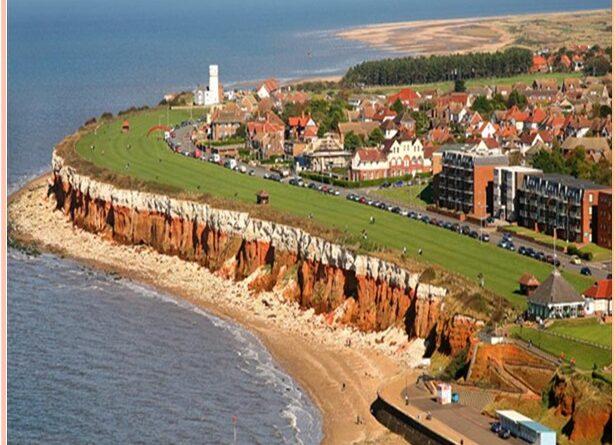
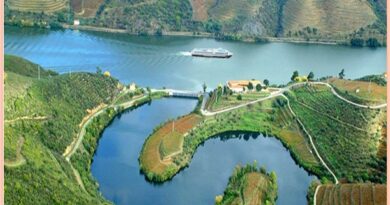


Pingback: Hamilton Pool Preserve-A Famous Sink Hole in Austin, Texas - Geotourism